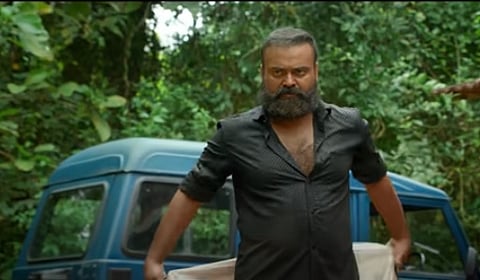Chaver review: Kunchacko-Tinu Pappachan film is a visual treat let down by the script
Chaver (Malayalam)(2.5 / 5)
The way Chaver begins, with the swish of knives piercing an unseen body somewhere in a dark alley, the film appears to plunge straight into its anticipated plot of ‘party killings’ in Kerala. The trailer had given away that much, with a shot of the lead actor Kunchacko Boban rising high with a weapon in his hand, thrusting it down on an opponent. But, what you don’t expect is for the film to be pivoted on the single incident, kept intriguing in the first half, and stretched beyond limits in the second. Even as nearly every single shot calls attention to the film’s craft, something its director Tinu Pappachan is known for, the writing falls too short of leaving any lasting impressions.
Actor, writer, and director Joy Mathew, who has been a vehement critic of Left politics in Kerala, has scripted the film, portraying a group of hardcore ‘party workers’, ready to do the bidding of those giving orders, who in turn remain unaffected by the brutal goings-on. Nowhere does the script mention a specific party but the props clearly point to one direction. It is a line that was previously taken in political films as old as Sandesham, and as recent as Kotthu. What lets Chaver stand apart though is Tinu Pappachan’s treatment of it, which is as raw as it is aesthetic. Art flows into the screen even and especially in the darkest moments. Actors effortlessly turn into performers – Kunchacko Boban admirably transitioning into a new persona (as he has been doing in many recent films), Arjun Ashokan proving to be a reliable sidekick, and Antony Varghese charming in his cameo.
Manoj KU – the unforgettable father figure in Thingalazhcha Nishchayam, Sajin Gopu – the gang leader in Romancham, and Joy Mathew himself make the cast of varied characters getting involved in a crime. Sangita, cast as a veteran party leader and called ‘teacher’, ends up a sad stereotype of a powerful woman leader, the few scenes she gets in the end looking like a hastily-added afterthought.
Aesthetically though, Chaver has many remarkable moments. It beautifully uses Theyyam, a ritual art form most common in Kannur, in which the performer is believed to transform into a god for a few moments. Guilt and memories of the characters come alive with the images of a Theyyam performer, the colours and music making it an enchanting visual. Justin Varghese’s music is just the right amount of gripping, in perfect sync with the visual magic Tinu lets you have, aided by the cinematography of Jinto George and Nishadh Yusuf. Though unexplained, it is somehow fitting that the camera turns its lens to a dog every now and then, a quiet witness who slips from scene to scene unnoticed.
With all its technical brilliance, the film still can’t make up for the lag the second half falls into, a single encounter surrounding a deserted bungalow failing to excite or make a connection to the telling moments of its main characters. Arjun Ashokan’s character, which had the potential to be developed for an interesting plot twist, remains unused. Kunchacko’s fails to touch as it is meant to. Yet another character seems forgotten midway. The script which began very earnestly to prove a point, fails in the last half to hold the viewer’s interest.
Disclaimer: This review was not paid for or commissioned by anyone associated with the series/film. TNM Editorial is independent of any business relationship the organisation may have with producers or any other members of its cast or crew.

